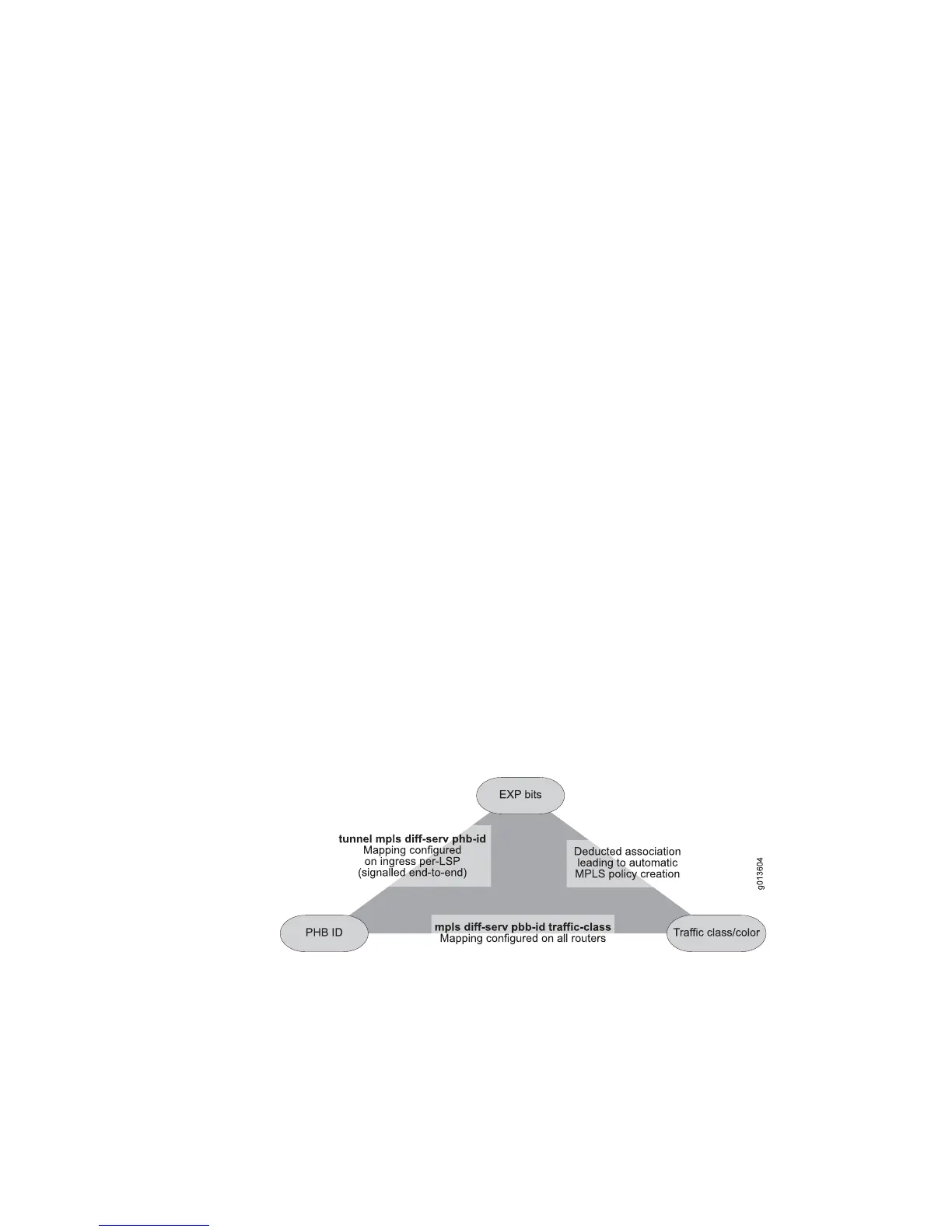For transit routers and egress routers along the path of the LSP, the incoming EXP
bits are matched to determine the traffic class and drop preference (color red, yellow,
or green). This matching is accomplished by means of a policy corresponding to the
signaled EXP-to-PHB mapping that is created and attached when the LSP is
established.
EXP bits are not normally changed on transit routers, but when traffic is sent out of
an LSP on a transit router, the bits can be changed by the policy. Normally, however,
the net effect is that the EXP-bits remain the same through the mapping sequence
of EXP bits to an internal traffic class/color combination back to EXP bits, unless the
traffic class/color combination is also modified by other factors.
Because the policy (which maps the EXP bits to an internal traffic class/color
combination and vice versa) attached to an LSP is created according to the
PHB-ID–to–EXP mapping signaled by RSVP-TE, you must configure on each router
a mapping association between PHB IDs and the internal traffic class/color
combinations.
The JUNOSe software automatically generates and attaches policies when tunnels
are established.
Figure 65 on page 306 shows the mapping associations between PHB IDs, EXP bits,
and traffic class (TC)/color combination in an E-LSP case.
■ Mapping association between PHB ID and EXP bits is configured on ingress
routers using the tunnel mpls diff-serv phb-id command.
■ Mapping association between PHB ID and traffic class/color combination is
configured on all routers using the mpls diff-serv phb-id traffic-class command.
■ Mapping association between EXP bits and traffic class/color combination is
done automatically by the JUNOSe software at the appropriate routers along the
path.
Figure 65: Associations Between PHB ID, EXP Bits, and Traffic Classes/Colors
Figure 66 on page 307 shows the operations performed at ingress, transit, and egress
systems during signaled mapping sessions.
306 ■ Signaled Mapping for RSVP-TE Tunnels
JUNOSe 11.1.x BGP and MPLS Configuration Guide
